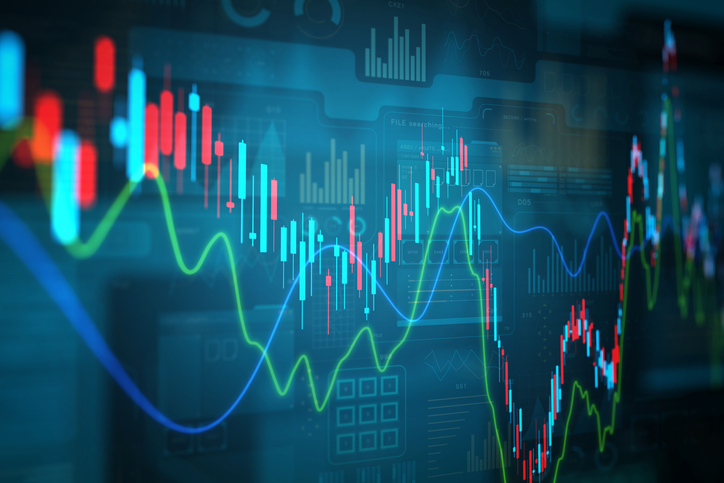Low-Risk Option Funds
If you want to bet on options, consider Gateway Fund A and PowerShares S&P 500 BuyWrite Portfolio.

Say the word "options" and most investors run, or at least walk, away. As well they should. Options give you the right to buy (or sell) a security at a predetermined "strike price" for a set time period. The overwhelming majority of options expire worthless, and most people who buy options lose money.
Think of most options buyers as gamblers at a casino. The odds are weighted against them. But every option has two sides to it -- and careful investors can get the "house" odds by selling options.
| Row 0 - Cell 0 | ETF Portfolios for Every Purpose |
| Row 1 - Cell 0 | Six Funds That Cut Risk |
One way to play the house side is to invest in Gateway Fund A (symbol GATEX). It provides a relatively low-risk way to invest in options. The fund imposes a 5.75% maximum sales charge if you're not using an adviser.
From just $107.88 $24.99 for Kiplinger Personal Finance
Become a smarter, better informed investor. Subscribe from just $107.88 $24.99, plus get up to 4 Special Issues

Sign up for Kiplinger’s Free Newsletters
Profit and prosper with the best of expert advice on investing, taxes, retirement, personal finance and more - straight to your e-mail.
Profit and prosper with the best of expert advice - straight to your e-mail.
PowerShares S&P 500 BuyWrite Portfolio (PBP), an exchange-traded fund, offers another way of accomplishing a similar goal. Its strategy is simpler than Gateway's. It doesn't offer the same level of risk protection, but it promises more-generous returns.
Both funds do better than the stock market when stock prices are falling or flat. When the stock market rises, however, the funds lag, as they have during the market's recent spurt.
The funds' option strategies are straightforward. Both funds start by tracking Standard & Poor's 500-stock index. Gateway owns individual stocks that reflect the index -- and trades infrequently. That means the fund rarely generates capital gains, so it rarely makes capital-gains distributions. The PowerShares ETF also invests in S&P 500 stocks and is tax-friendly.
Both funds sell call options on the S&P 500 with strike prices near the index's current value and with expiration dates not very far into the future. The PowerShares ETF mechanically sells options that have strike prices close to the index's current price and that will expire in one month. Gateway sells options with strike prices that are, on average, near the index's value and will expire in one, two or three months.
Both funds earn income from selling the options -- which confer on buyers the right to buy the stocks in the index at that price during that short time period. If the S&P 500 goes down, the funds' option income helps offset any decline in the index. If the S&P rises, the funds will rise much less than the index because option buyers will demand the funds' stock at prices below the now-higher value of the index.
Mike Buckius, one of the Gateway fund's three managers, says that income from selling calls is the main source of the fund's profits. "We get very little of our return from the market moving up in price," he says.
Selling calls, though, is profitable. Says Buckius: "Much like the insurance industry, it's a market where the seller over the long term tends to make money. Most people buy options to speculate and tend to lose money. Sellers of options tend to make money."
The PowerShares ETF focuses solely on harvesting that call-selling income. Gateway adds another wrinkle. In addition to selling calls on the S&P, Gateway also buys "puts" on the index. A put option gives you the right to sell a stock (or an index) at a particular price within a particular time period. You can speculate with puts, betting that a price will fall, or use them for insurance.
Gateway generally buys index puts with strike prices 6% to 10% below the S&P's current price. Buckius says the fund usually spends about 15% to 25% of its call-selling income to buy two-, three- and four-month puts on all its assets. "We're willing to pay something extra in the unlikely event of a large market crash," Buckius says.
Gateway has been following the same strategy since 1988. That gives me comfort that it will continue churning out the same low-risk returns over time. Over the past ten years through July 31, Gateway returned an annualized 2.9% -- an average of 4.1 percentage points per year better than the S&P 500. From 1989 through 1999, a period of stunning stock-market gains, the fund returned an annualized 11.3% -- an average of 8.1 points per year less than the index.
Gateway, of course, can lose money, but it rarely does. In 2008, however, the fund lost 14%. That's by far the most it has ever lost, but the results still look good compared with the 37% loss suffered by the S&P.
Last year aside, the fund's returns have fluctuated in a relatively narrow band -- ranging from a gain of 12% in 2003 to a loss of 5% in 2002. Indeed, the fund is only about half as volatile as the S&P. That helps contain losses during the market's bad years.
The PowerShares fund is somewhat riskier. As you'd expect, its returns and volatility are both higher than those of the Gateway fund. But the ETF's risks are still modest compared with the S&P 500 or, to be more precise, a fund that tracks the index.
The PowerShares ETF lost 30% last year and is roughly 20% less volatile than the S&P. The performance of the index that the ETF tracks suggests that the fund will lag the market over the long term. In 2003, for instance, the index returned 19%, while the S&P 500 returned 29%.
The only thing that makes me a bit nervous about the PowerShares ETF is its newness -- it's only a year old. It is difficult to tell exactly how the fund will behave over a longer period. But so far, so good.
Because Gateway is even less risky, I find it the more appealing choice. It offers decent returns that don't correlate highly with either the stock market or the bond market. That makes this fund a nice diversifier. You probably wouldn't want to put more than about 10% of your money in such an odd-duck fund. But it has proven its value. If you can get it without the load, either by investing through your adviser or putting up $100,000 to invest in the Class Y shares (GTEYX), all the better.
Steven T. Goldberg (bio) is an investment adviser.
Profit and prosper with the best of Kiplinger's advice on investing, taxes, retirement, personal finance and much more. Delivered daily. Enter your email in the box and click Sign Me Up.

-
 5 Types of Gifts the IRS Won’t Tax: Even If They’re Big
5 Types of Gifts the IRS Won’t Tax: Even If They’re BigGift Tax Several categories of gifts don’t count toward annual gift tax limits. Here's what you need to know.
-
 The 'Scrooge' Strategy: How to Turn Your Old Junk Into a Tax Deduction
The 'Scrooge' Strategy: How to Turn Your Old Junk Into a Tax DeductionTax Deductions We break down the IRS rules for non-cash charitable contributions. Plus, here's a handy checklist before you donate to charity this year.
-
 IRS Says You Made a Tax Return Mistake? A New Law Could Help You Fight Back
IRS Says You Made a Tax Return Mistake? A New Law Could Help You Fight BackTax Law Updated taxpayer protections change what the IRS must explain on error notices and how long you have to respond.
-
 Dow Rises 497 Points on December Rate Cut: Stock Market Today
Dow Rises 497 Points on December Rate Cut: Stock Market TodayThe basic questions for market participants and policymakers remain the same after a widely expected Fed rate cut.
-
 JPMorgan's Drop Drags on the Dow: Stock Market Today
JPMorgan's Drop Drags on the Dow: Stock Market TodaySmall-cap stocks outperformed Tuesday on expectations that the Fed will cut interest rates on Wednesday.
-
 Stocks Slip to Start Fed Week: Stock Market Today
Stocks Slip to Start Fed Week: Stock Market TodayWhile a rate cut is widely expected this week, uncertainty is building around the Fed's future plans for monetary policy.
-
 Stocks Keep Climbing as Fed Meeting Nears: Stock Market Today
Stocks Keep Climbing as Fed Meeting Nears: Stock Market TodayA stale inflation report and improving consumer sentiment did little to shift expectations for a rate cut next week.
-
 Small Caps Hit a New High on Rate-Cut Hope: Stock Market Today
Small Caps Hit a New High on Rate-Cut Hope: Stock Market TodayOdds for a December rate cut remain high after the latest batch of jobs data, which helped the Russell 2000 outperform today.
-
 UNH Sparks a 408-Point Surge for the Dow: Stock Market Today
UNH Sparks a 408-Point Surge for the Dow: Stock Market TodayThe best available data right now confirm both a slowing employment market and a December rate cut, a tension reflected at the equity index level.
-
 Stocks Bounce Back With Tech-Led Gains: Stock Market Today
Stocks Bounce Back With Tech-Led Gains: Stock Market TodayEarnings and guidance from tech stocks and an old-school industrial lifted all three main U.S. equity indexes back into positive territory.
-
 Dow Slides 427 Points to Open December: Stock Market Today
Dow Slides 427 Points to Open December: Stock Market TodayThe final month of 2025 begins on a negative note after stocks ended November with a startling rally.